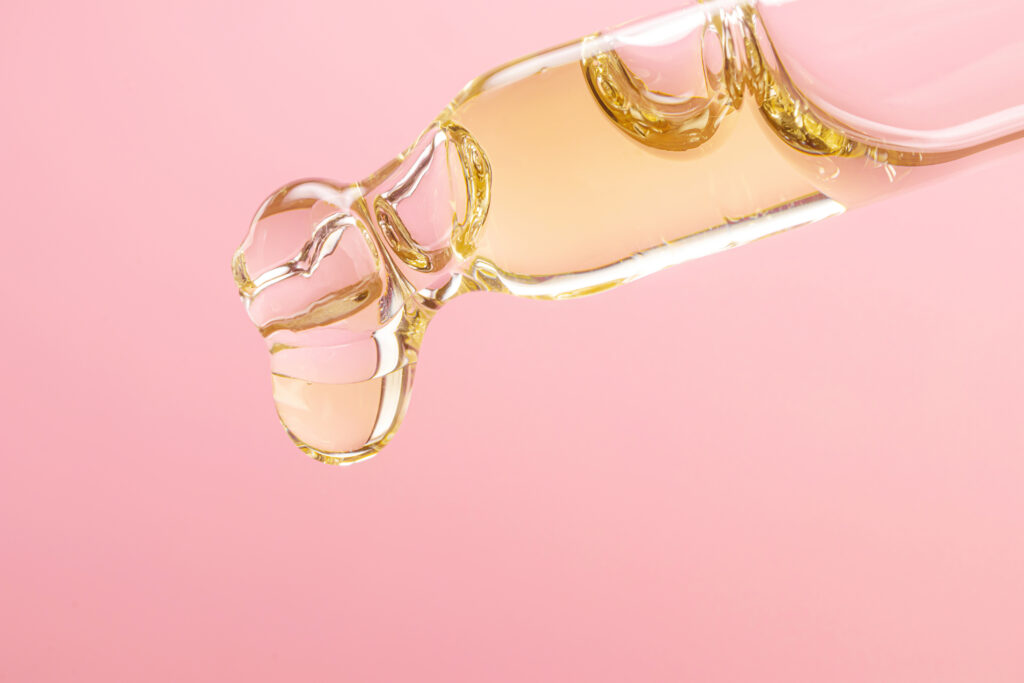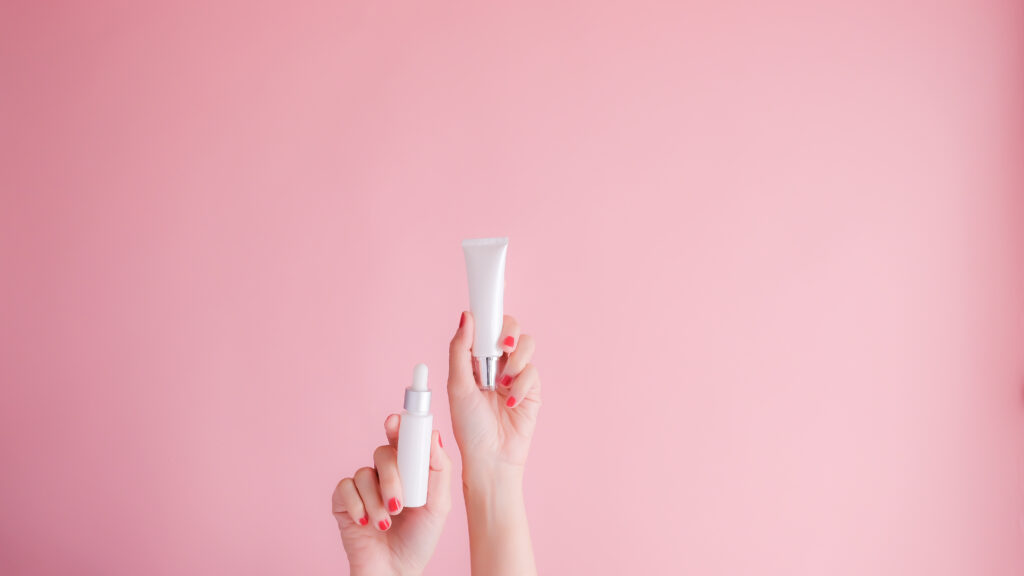If you’re building your skincare brand, you’ve probably already run into this: moisturizers, hydrators, facial oils, occlusives, emollients… and wait — aren’t facial oils moisturizers too?
Well, yes — and no.
This article is your go-to guide for understanding the difference between facial oils and moisturizers, both from a skincare science perspective and from a branding and product development angle. Because here’s the truth: terminology in skincare isn’t always as clear as it seems — especially when marketing comes into play.
Let’s break it down so you know exactly what to formulate, how to label it, and what your customer is actually looking for.
Understanding the Core Difference: Hydrators vs. Moisturizers
Hydrators: Water-Lovers
Hydrators are typically water-based products that contain humectants — ingredients that attract water either from the atmosphere or deeper layers of your skin.
Examples of hydrators:
- Hyaluronic acid serums
- Aloe vera gels
- Glycerin-based mists
They don’t seal moisture in — they bring it to the surface. But without a moisturizer to lock it in, all that lovely hydration can just evaporate.
Moisturizers: The Sealers
Moisturizers are technically an umbrella term, including emollients (to soften), occlusives (to seal), and sometimes even humectants.
In practice though, most people associate “moisturizer” with creamy, water-based products — especially lotions and creams.
But here’s the twist: Facial oils also qualify as moisturizers.
They don’t hydrate (because they’re anhydrous), but they do lock in existing moisture by forming an occlusive layer on the skin. This helps prevent transepidermal water loss (TEWL) and strengthens the skin barrier.
In short: Hydrators add water. Moisturizers trap it in. Oils are great at the second job — and that makes them moisturizers in function.
Why the Terms Get Confusing
There’s no legal or scientific requirement for brands to use the words “moisturizer” or “hydrator” consistently — which means marketing language and actual product function often don’t match up.
For example: A hyaluronic acid serum might be sold as a moisturizer, even though it doesn’t moisturize — it hydrates by pulling water into the skin.
On the flip side, a facial oil might be marketed as a serum or treatment oil, but it technically works as a moisturizer — sealing water into the skin with occlusive and emollient action.
💡 In short: what a product does isn’t always what it’s called.
So What Are We Really Comparing?
When we say “facial oil vs moisturizer,” we’re not just debating product labels — we’re comparing two fundamentally different types of formulations:
- 🧴 A 100% oil-based product (No water, no humectants — just oils, esters, extracts. Often labeled facial oil or serum)
- 💧 A water-based emulsion (Combines water, humectants, oils, emulsifiers — typically called moisturizer, cream, or lotion)
This difference is crucial — especially if you’re a formulator or building a skincare brand. These products aren’t interchangeable. Each has a specific role in skincare routines, and choosing one over the other can significantly impact both product performance and customer perception.
Technical Comparison Table
Here’s a simple breakdown of how different product types function:
| Product Type | Ingredient Structure | Technical Function | Marketing Label |
| Hyaluronic acid serum | Water + humectant | Hydrator | Hydrating Serum |
| Water-based cream | Water + emollient + occlusive | Hydrator + Moisturizer | Moisturizing Cream |
| Facial oil serum | Oil-based | Emollient + Occlusive (Moisturizer) | Facial Oil (Moisturizer) |
So… Is Facial Oil a Moisturizer?
Yes — technically.

Your oil-based serum is a moisturizer in the truest sense of the word: it softens the skin (emollient) and forms a barrier to trap water (occlusive).
But it doesn’t hydrate — because it contains no water. That’s why many brands avoid the term “moisturizer” when selling facial oils, to prevent confusion.
If your customer is expecting a cream and you sell them a lightweight rosehip oil, they may think it’s “not moisturizing enough.” But if they understand that oils are part of the moisturizing equation, you’ve earned trust — and educated your buyer.
So, What Does Your Skin Actually Need?
Skincare isn’t one-size-fits-all — and when it comes to hydration and moisture, every skin type plays by slightly different rules.
Hydration vs Moisture: A Quick Recap
- Hydration = adding water to the skin (via humectants like glycerin or hyaluronic acid)
- Moisture = sealing that water in (via emollients and occlusives like oils and butters)
Even oily skin types can be dehydrated. That tight, dull feeling after washing your face? Classic dehydration. Your skin might be overproducing oil to compensate for the lack of hydration — and that’s where balance becomes everything.
Is Facial Oil Enough On Its Own?
Sometimes yes, sometimes no.
If your skin is well-hydrated (internally and externally), a lightweight facial oil might be enough to seal in that moisture and support your barrier. But if your skin is dehydrated or you’re in a dry climate, oils alone may not cut it — you’ll want to add a water-based layer underneath.
In What Order Should You Apply Products?
Product layering matters. Here’s the golden rule:
Always go from the lightest to the richest texture.
General Skincare Application Order:
- Water-based hydrating serum (e.g., hyaluronic acid)
- Moisturizing cream (contains water + emollients + occlusives)
- Facial oil (to lock everything in)
Think of facial oil as the cozy top layer that keeps all the good stuff sealed in. It’s not there to replace hydration — it’s there to protect it.
🧪 Which Should Your Brand Start With?
✅ Start with Oils If You:
- Want a beginner-friendly product that’s easier to test, scale, and stabilize
- Prefer a preservative-free formula — no water means no microbial testing headaches
- Aim to keep production small and agile (think: handmade batches, home studio setup)
- Want a fast route to market with high profit margins (low cost, luxe image)
- Plan to test different actives and oils without worrying about emulsion stability
Oil-based formulations are ideal for indie brands, small businesses, and anyone starting with limited lab access but a strong creative vision.
🧪 Consider Emulsion Creams If You:
- Have access to proper lab equipment (pH meter, homogenizer, stability testing tools)
- Are confident in handling preservation systems and microbial stability
- Want to formulate products that offer both hydration and moisturization
- Have longer timelines and are ready to invest in R&D and regulatory safety checks
Creams give you more flexibility in skin performance — but they come with more technical and compliance-related challenges. They’re fantastic once you’re confident in formulation and want to diversify your product line.
💡 Final Thoughts: The Best of Both Worlds
You don’t have to “pick a side” between hydrators and moisturizers. In fact, many successful brands offer both — they just do it strategically.
What matters is how you talk about your product.
If you’re starting with a facial oil, don’t sell it short:
- ✅ It’s simple, elegant, and backed by solid formulation science
- ✅ It’s technically a moisturizer — even if it doesn’t hydrate
- ✅ It allows for a rich blend of botanicals, oil-soluble actives, and antioxidants
But here’s the catch: 🚫 Don’t call it “hydrating” unless it contains water-based ingredients or humectants.
That’s not just a technicality — it’s a matter of clarity and trust.
📘 Want to Go Deeper?
If you’re serious about building your first product the right way, our Facial Oil Serum eBook is your blueprint. You’ll learn:
- How oils function on different skin types
- How to structure a formula from scratch
- How to pair actives for maximum performance
- And how to avoid common mistakes beginner formulators make
🎯 Whether you’re building for yourself, your brand, or your future customers — start with science, not guesswork.
👉 [Explore the Facial Oil eBook] — your beginner-friendly roadmap to smart skincare formulation.
👉 Curious but not sure yet? [Download The Glow Kit] and experiment with 3 science-backed recipes, free.
🤔 Still Have Questions?
If you’ve got questions, I’ve got answers — and I personally read every message.
Just drop your thoughts in the form below or email me directly at [email protected].
I’m here to help — really.

